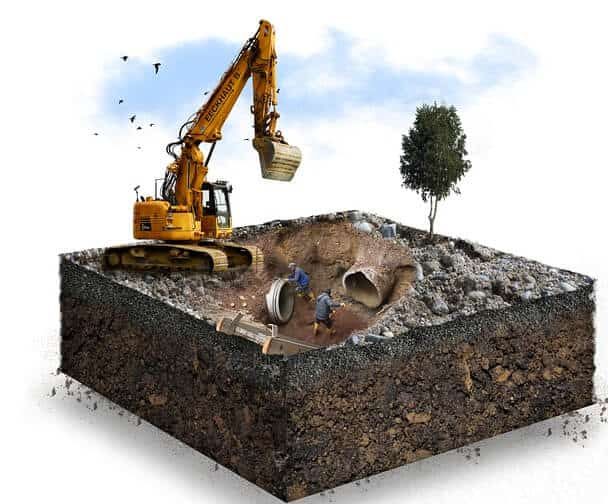The global construction industry is expected to perform well in the coming years. Even with several setbacks, mainly due to supply chain issues, the revenues are foreseen to remain robust, according to industry analysts.
According to Statista, in 2030, the market is expected to reach USD$14.4 trillion, more than double its 2020 figures at USD$6.4 trillion.
Moreover, numerous commercial and residential constructions worldwide are projected to be driven by rapid business developments and the increasing global population.
The rising costs of construction materials also drive the increase in market value. As such, contractors must find ways to manage their expenses.
Purchasing versatile machines, like mini rubber excavator tracks, can be a worthwhile investment. Read on to learn why.
Why do contractors use a mini excavator with rubber tracks?
Besides being versatile, mini excavator rubber tracks are generally lighter than their steel track or tire-fitted counterparts. But being lightweight doesn’t mean they’re less efficient.
They can save time in land preparation activities because they’re easy to install, operate, and maintain. More importantly, mini excavator rubber tracks offer better mobility and cause less ground damage than the other types.
5 Uses of mini excavator rubber tracks in construction
Because of its compact size, a mini excavator rubber track works great on soft and unstable surfaces or smaller sites, increasing worker safety.
Data from the U.S. Bureau of Labor Statistics show 1,008 deaths in the construction industry in 2020. With 805 fatalities, transportation and warehousing-related accidents were the second leading cause.
Besides being popular for their primary digging function, these machines can be used for other activities, so long as you have the right attachments.
Site clearing
No construction activity can push through without site preparation and clearing. This task appears in all construction checklists and involves removing all materials, vegetation, structures, rocks, and other types of debris within the project site.
Surface soil can often be loose and filled with decomposing materials, making it highly unstable to build on.
Therefore, it’s best to remove unnecessary objects to help stabilize the ground and create a solid foundation. It also reduces the likelihood of fire and other hazards before, during, and after the project.
The site could also have old structures that need to be demolished, and mini excavator rubber tracks can help you do these jobs with the right attachments, such as a long boom.
A bucket with a thumb attachment allows easy debris handling, and a high boom lift can transfer these unwanted items into a bigger truck. Land clearing costs anywhere from USD$2,500 and USD$5,000, depending on the size and work requirements.
Drilling
By poking a hole in the ground, construction workers can perform numerous tasks, such as installing fence posts, building foundations, road signages, and utility pipes, among many others. Drilling is also vital in landscaping and mining activities.
Augers can be used as mini excavator attachments to fulfill specific construction tasks that require drilling. The machine can drill whether the ground is made from concrete or different soil types.
Rock auger bits can be installed to break down concrete and solid rocks, while tree augers can drill a hole through trees. These attachments come in various sizes and shapes and can be installed or replaced according to their purpose.
Excavation
Excavation typically comes next after drilling. Mini excavators move materials like rocks and earth with precision and efficiency, making them perfect for constructing basements or installing a swimming pool.
In addition, excavation is necessary for creating utility trenches for water, gas, sewer, power, and telephone lines.
Mini excavators running on rubber tracks can excavate the trench, backfill it, and compact it with additional attachments. It also works great in digging slots for walls and fences.
Compacting
A mini excavator with rubber tracks can also be used in compaction. As the name implies, this construction activity involves the machine pressing on the ground to reduce loose soil and air space.
It assures that the earth is highly dense, making it stiff and strong enough to support the structure.
Compacting is crucial in all construction projects because it ensures ground stability and reduces the risks of structural failures. This is essential before building establishments, roadways, parking lots, etc. Different types of compactors attachments, such as plates and rollers, make compacting with an excavator easier.
Grading
Some construction projects may require grading, which entails modifying the shape of the land on a site. Grading involves adding or removing slopes to flatten the ground. Conversely, it can include creating slight declines or inclines on a project site.
Regardless, grading aims to make the surface flat, even, and with the right angle, improving the stability of the structure’s foundation. Moreover, site grading can enhance the site’s aesthetics, facilitate or update the building’s drainage system.
It also allows the site to adapt to its intended use, for instance, as a park, basement, street, or parking area.
To use a mini excavator, you need a rake attachment or a grading bucket, a shallow one with a straight edge. A grading blade attachment can also be used to grade and prepare the soil as a foundation for applying concrete.
Conclusion
Mini excavators are a fixture on construction sites because they can be used for different purposes, as discussed above. With the right attachments and a skilled operator, they can be used in several construction tasks with unique requirements.
Moreover, mini excavators running rubber tracks will have enough traction even with different soil types, difficult terrains, and tight spaces.
